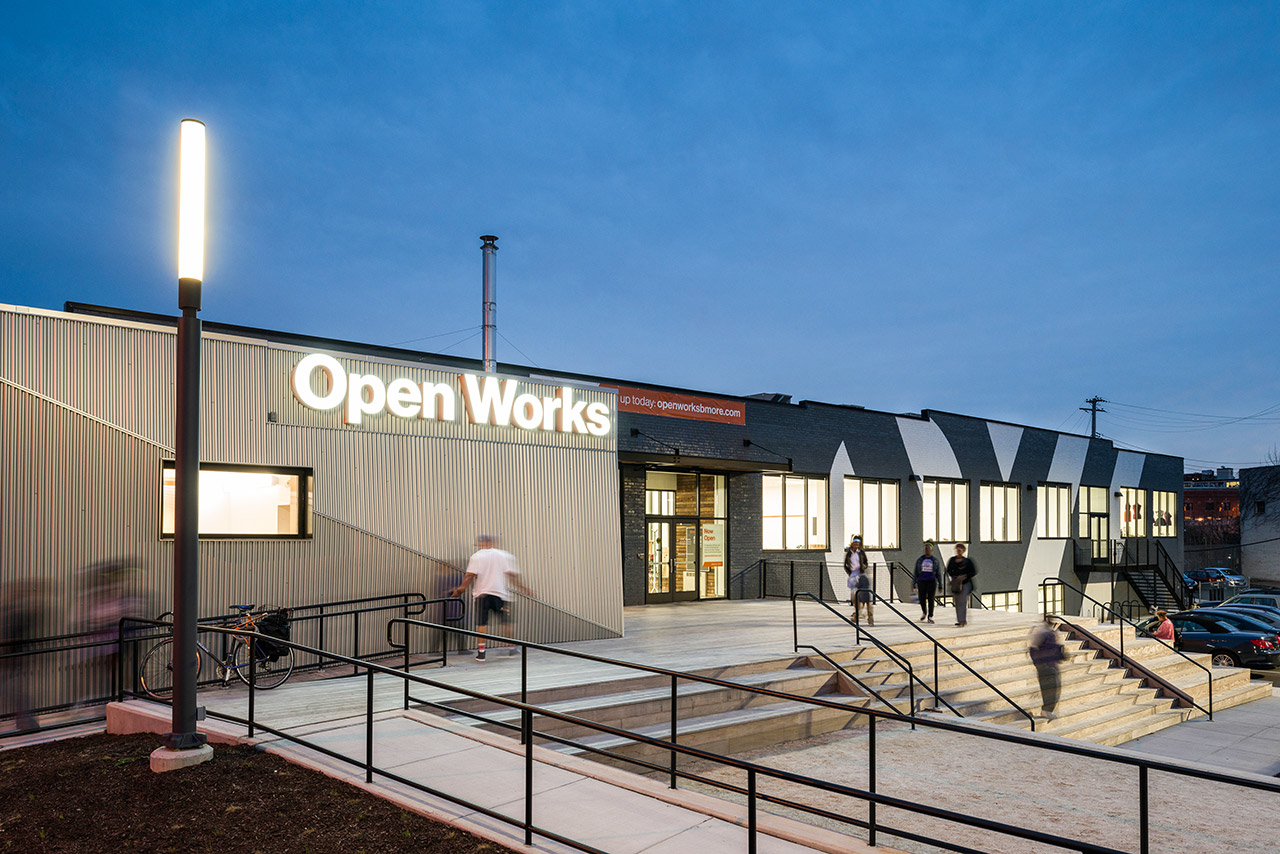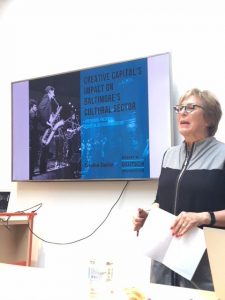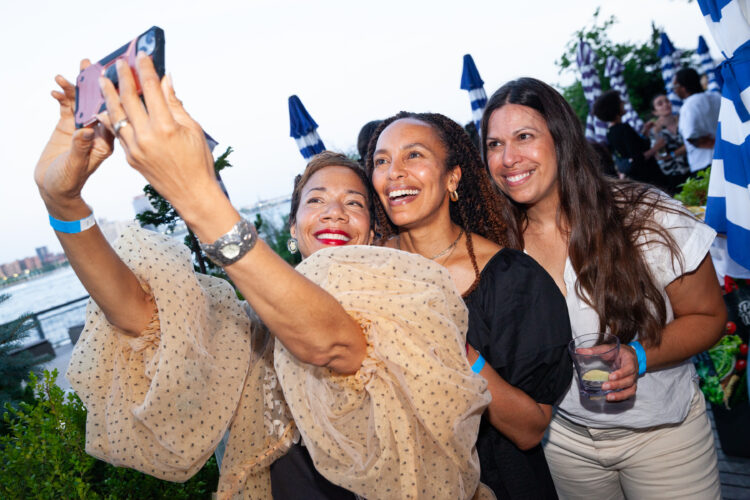How Creative Capital Inspired Support Structures in Baltimore

When Jane Brown met Ruby Lerner in 2009, artists were the last thing on her mind. As Executive Director of the Baltimore-based Robert W. Deutsch Foundation, Jane was completely focused on supporting science and technology-related programs in Maryland colleges and universities. Then Ruby, Founding Director of Creative Capital, invited her to attend the Creative Capital Retreat where she watched several artists present their projects.
“Things were never the same again,” said Jane, who joined Creative Capital’s Board of Directors in 2017.
“I had never before witnessed or seriously considered artists as highly conscious change agents in the world,” she continued. “In that brief experience, I was completely captivated. I saw artists using technology in new and unique ways. I began to understand the kinds of contributions these creative forces can make and the multiple ways they can make them.”

Jane Brown presenting about Creative Capital’s impact on Baltimore
“For the first time, I really got the fact that artists matter. And I understood how important it is to invest in them.”
Inspired by the innovative artistic projects she witnessed at the retreat, Jane became increasingly engaged with Creative Capital and a variety of artist Awardees. She returned to Baltimore with a new perspective on the transformational role that artists might play in the revitalization of a challenged Rust Belt city.
Soon, the Deutsch Foundation began funding artists and small arts organizations for the first time. As Deutsch Foundation staff assessed the many needs within the arts ecosystem in Baltimore, they quickly recognized the need for project funding for artists. Familiarity with the Creative Capital funding model enabled them to launch the Rubys in 2013, a grant to provide project-based funding for performing artists, visual artists, media artists and writers in the Baltimore region.
Jane and her team also realized that Baltimore-based artists needed affordable and safe places to create and connect. So, with no previous experience in real estate, they purchased and renovated 60,000 square feet of real estate in two old industrial buildings. This became The Motor House—a hybrid arts hub, gallery, café and performance space—and Open Works—a maker-space with state-of-the-art fabrication technologies.
With the Rubys providing funding and professional development, and the two new spaces, the Deutsch Foundation and its ancillaries have made a significant impact in supporting the artists, makers, and creative entrepreneurs of Baltimore. Supporting the work of contemporary artists in the region has enriched the broader community of Baltimore and its environs.
Creative Capital Awardees Eric Dyer and Paul Rucker have seen first-hand how Jane and the Deutsch Foundation have affected artists in Baltimore and the community in general.
“Getting the Creative Capital Award was a major turning point in my career, obviously,” Paul told us, “but the biggest connection that I made through Creative Capital was at the Retreat when I met Jane Brown and Neil Didriksen [Jane’s husband and collaborator].
“They told me, ‘We’d like you to do something in Baltimore.’ And I said ‘Sure, I’ll come visit.’ They said, ‘No, we want you to move here.’”
Paul moved to Baltimore for two years, working there as a Deutsch Fellow. “That was a big move,” he said, “but it was the most significant move in my career. Baltimore is America amplified. Many of the issues you experience in other parts of the country, Baltimore has in spades. For me to address issues of power, history, race, incarceration, slavery, I couldn’t have picked a better place than Baltimore.”
As a newcomer to Baltimore, Paul told us that he witnessed a transformation in the city to become better equipped to support artists. The city has one of the best art schools in the country (MICA), but he wondered, “how do you keep talent in a city?” Jane had figured out how to do it: “She and Neil understand the need for resources.”
Eric Dyer, a resident and native of Baltimore, seconded Paul’s view. “Jane has hyper-enabled Baltimore artists through new funding opportunities and incredible FabLab and studio spaces. What she’s created in a short time is staggering and it’s been thrilling to watch diverse communities of artists, makers, entrepreneurs, students, and the generally curious form, mutate, and reform in these places.

Inside the maker space at Open Works Baltimore
“She’s helping to upend Baltimore’s unfortunate past of racially and economically separating its citizens, and providing fertile ground for the growth of communication, new ideas, and unexpected hybrids.”
For Jane, the realization that Baltimore needed to better empower artists all began with Creative Capital: “The organization has served as an amazing catalyst,” Jane told us, “and it continues to provide powerful models, and immense inspiration which we have been able to localize with great success.”
As a member of Creative Capital’s Board of Directors, Jane Brown is interested in continuing to help build networks of support and resources for artists communities. “It’s been incredible to watch Jane and her team make the Creative Capital model local for changing the lives and careers of artists in the Baltimore region,” Creative Capital President and Executive Director Suzy Delvalle said. “We’re so excited that she has joined our Board of Directors to continue implementing that model on a national level.”
Read more about Deutsch Foundation and the Ruby Grant Program.
